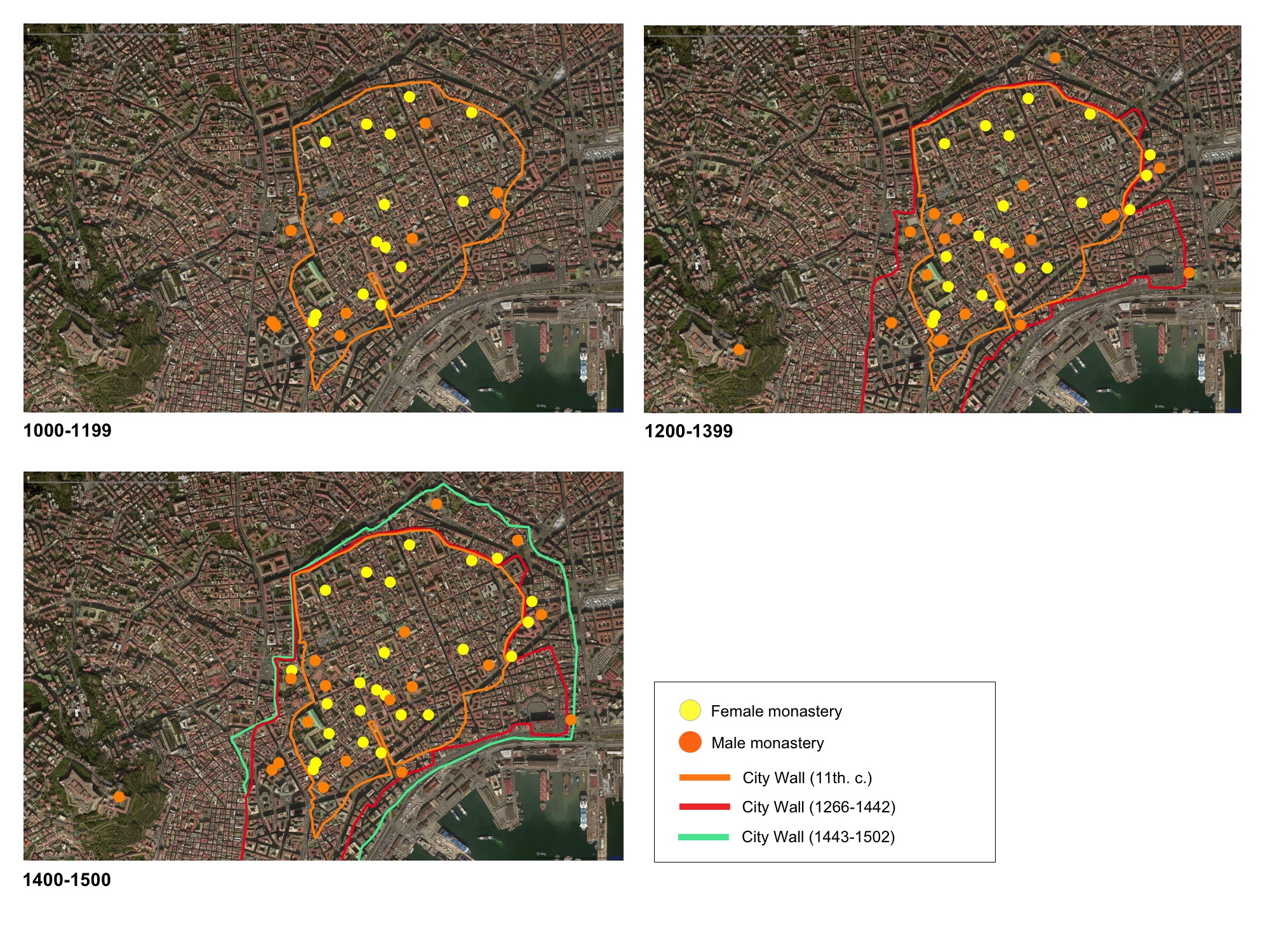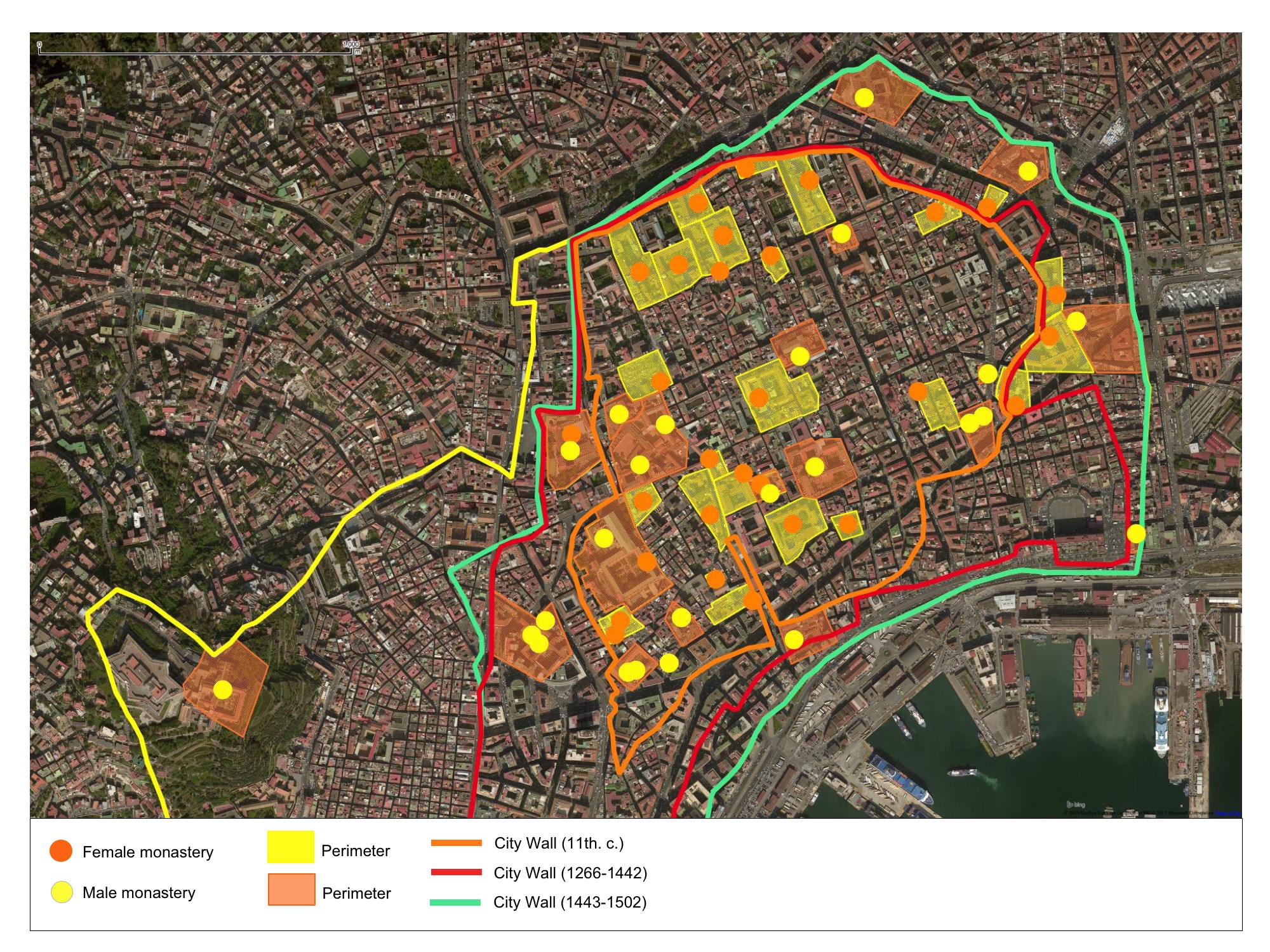Spiritual Landscape of Medieval Naples
1. Establishment of Male and Female monasteries
This GIS map has been made by combining multiple layers that georeference male and female monasteries (11th-15th c.) over an orthophotomap of present-day Naples. Clicking over “Map & Tools” (at the upper right hand corner) you can access and select both the monasteries of the different orders (mapped as single points) and the city walls (mapped as lines). This feature will allow you to explore the evolution of the spiritual landscape of medieval Naples.
2. Evolution and Chronology
Medieval documents, archaeological sources and historical cartography have enabled us to follow the gradual establishment of monasteries in the city of Naples, as well as their impact on the topography of the medieval urban area. The study is built on a diachronic cartography of the evolution of the Neapolitan monastic landscape with the aid of GIS.

The above maps show the establishment process of male and female monasteries in the city of Naples between the 11th and 15th centuries. The territorial analysis of these monasteries reveals that they played an important role not only in the spiritual life of the city, but also in its economic, social and cultural dimensions.
In addition, observation of the maps puts on display the different establishment methods. Augustinian and Carmelite monasteries were attached to the city walls. Franciscan monasteries exhibit a similar pattern, the premises being initially situated outside the walls, although they were later relocated inside the city. Dominican convents, however, were always located inside the walled urban space. Despite their different establishment strategies, the locations of these communities became spaces of religious, social and urban polarization.

The delineation of each monastic space inside the urban area allows for the quantification of the Neapolitan monastic space throughout the medieval period.